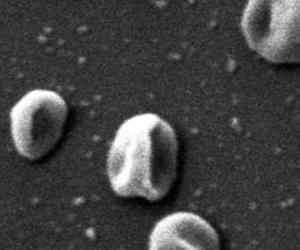Nitrososphaera viennensis: a new species, genus, family, order and class of soil-dwelling archaea
Posted on August 29, 2014 by Jon Fuhrmann
When a new species of microbe is discovered, it often fits into a known genus, forming a new outermost branch in the tree of life. Sometimes, though, organisms are discovered with DNA sufficiently different from all known species that they are placed into a new genus.
Additions of new branches to the tree of life become rarer as we move closer to the ‘trunk’, towards ever broader classifications of organisms. Now, a team of Viennese researchers isolated a new species of archaea, named Nitrososphaera viennensis, which is the first known member of not just a new genus, family, or even order – it belongs to a whole new class of archaea. N. viennensis has been officially described in theInternational Journal of Systematic and Evolutionary Microbiology.

Archaea are considered ancient organisms but are still poorly understood life forms. They have characteristics in common with the two domains of life – bacteria and eukaryotes, the group that includes all other life forms. Like bacteria, archaea have no nucleus – but archaeal proteins are often much more similar to those of eukaryotes. After much debate throughout the 20th century as to whether archaea should be classified with bacteria or eukaryotes, they now form their very own domain in the tree of life.
Until recently, it was also thought that most archaea were extremophiles, thriving in environments with extremes of temperature, acidity, heavy metals, salinity, nuclear radiation, or availability of water or nutrients. It was only nine years ago that the first non-extremophilic, aerobic archaeon was cultivated from a marine sample. Similarly, N. viennensis was discovered in soil from the gardens of the Faculty of Ecology at the University of Vienna: a decidedly moderate environment.
N. viennensis and its relatives are interesting in another respect: they perform a chemical reaction called ammonia oxidation, transforming ammonia (NH3) and producing nitrite (NO2–). This is a vital step in the global nitrogen cycle, which ensures that nitrogen is transformed into compounds more easily accessible to plants. Until 2005, when the marine archaeon Nitrosopumilus maritimus was isolated and found to oxidise ammonia, the consensus was that only bacteria could oxidise ammonia. N. viennensis has become the first ammonia-oxidising archaeon ever isolated from soil in pure culture.
The isolation and production of a pure culture of N. viennensis was groundbreaking as ammonia-oxidising organisms are notoriously difficult to cultivate. Although the genetic material of microbes can be detected and analysed in their natural environment, it is much more difficult to understand their functioning in this manner, let alone characterise a new species. As such, the work of a former postdoc at the faculty proved invaluable: Dr Maria Tourna used soil samples from a variety of environments and started cultures under various environmental conditions to look for ammonia-oxidising archaea. N. viennensis was the crowning result.
In the marine environment, neutrophilic ammonia-oxidising archaea such as N. maritimuscontribute very significantly to the global nitrogen cycle simply because there are so many of them: in some parts of the ocean, ammonia-oxidising archaea make up nearly 40% of picoplankton (the smallest non-virus ocean organisms). Dr Stieglmeier also estimates that ammonia-oxidising archaea such as N. viennensis may make up as much as 1% of the total microbiota in soil. By isolating the first such species, she has made an important step forward towards finding out more about their metabolism, and their potential contribution of greenhouse gases such as nitrous oxide to the atmosphere.
It is not certain whether N. viennensis will prove to play a major role in ammonia oxidation in soil – other, as yet uncultivated archaeal species may be more numerous and make bigger contributions. Nevertheless, the isolation and classification of this archaeon has made an enormous contribution to archaeal taxonomy and to our understanding of what organisms contribute to the global nitrogen cycle.
Stieglmeier, M., Klingl, A., Alves, R. J., Simon, K. M. R., Melcher, M., Leisch, N., & Schleper, C. (2014). Nitrososphaera viennensis sp. nov., an aerobic and mesophilic ammonia-oxidizing archaeon from soil and member of the archaeal phylum Thaumarchaeota. International Journal of Systematic and Evolutionary Microbiology, 64(8), 2738-2752. doi:10.1099/ijs.0.063172-0
